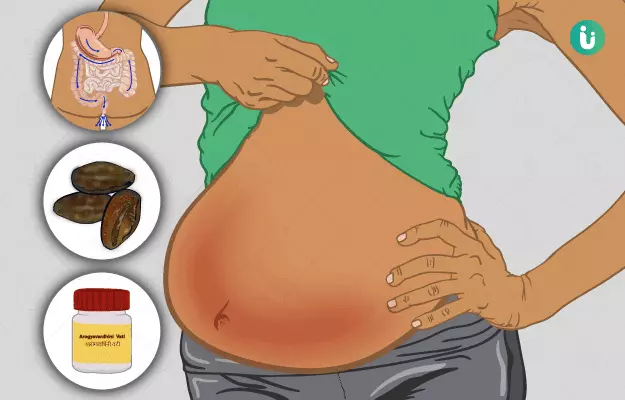Ascites, also known as jalodara, is a condition of the abdomen that occurs due to the accumulation of toxic fluid in the peritoneal cavity. As per Ayurveda, jalodara is a type of udara roga (disease of the abdomen), which is caused due to the accumulation of malas (waste products). This accumulated waste leads to the vitiation of doshas, prana vata (the main energizing force in the body), agni (fire component of the body) and apana vata (a type of vata). The signs and symptoms of ascites include abdominal distention along with swelling and pain in the abdomen. Ascites is commonly associated with hepatitis, liver cirrhosis and fatty liver. When detected in the early stages, it can be easily treated. Both medical and surgical treatments are suggested for ascites.
The main aim of treatment is the removal of the waste from the abdomen. This is achieved by nitya mridu virechana (the regular use of mild purgatives), which is one of the main therapies in panchakarma (five treatments). Diuresis is done using herbs that increase urine output, e.g., punarnava (red hogweed). Other herbs like pippali (long pepper) and haritaki (chebulic myrobalan) are also suggested. Ayurvedic formulations like shveta parpati (a herbo-mineral composition) and arogyavardhini vati (a classical polyherbal composition) are used in the treatment of ascites. In some severe cases, surgery may be advised. Restricted diet and regular treatment as per the advice of an Ayurvedic practitioner help in controlling the symptoms of the disease.













